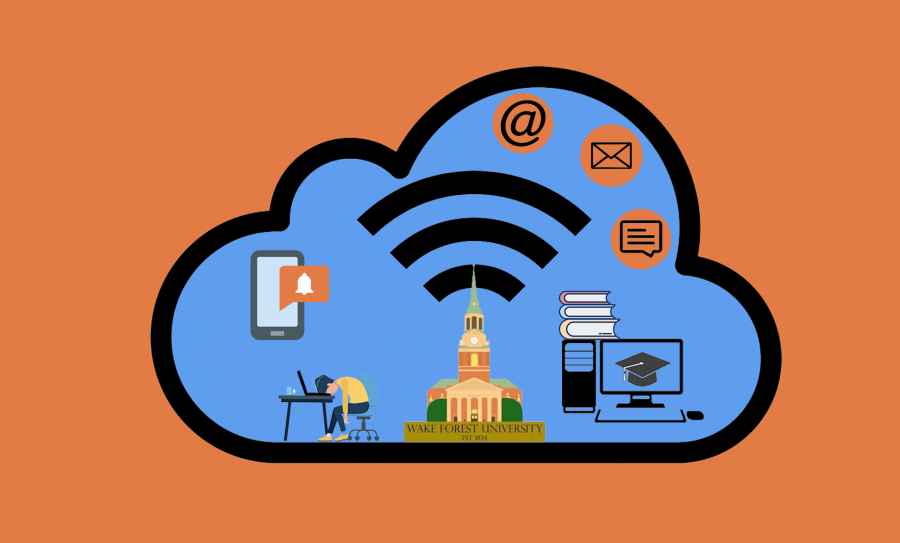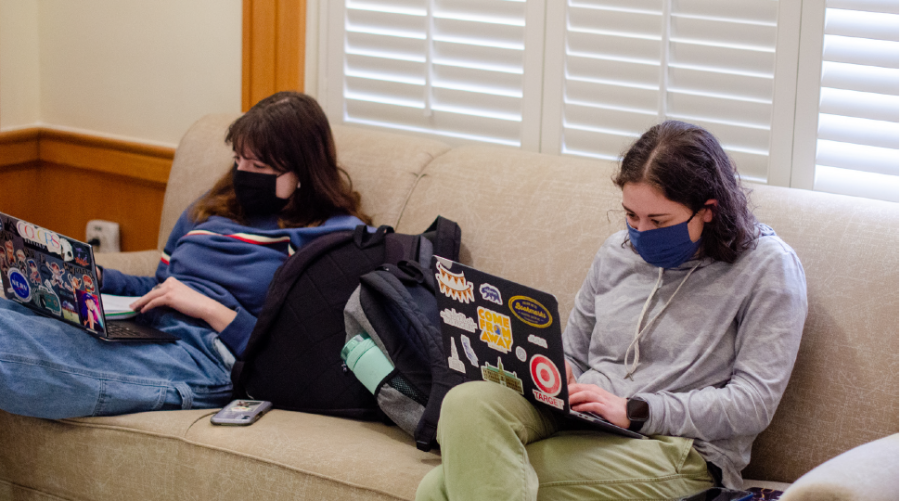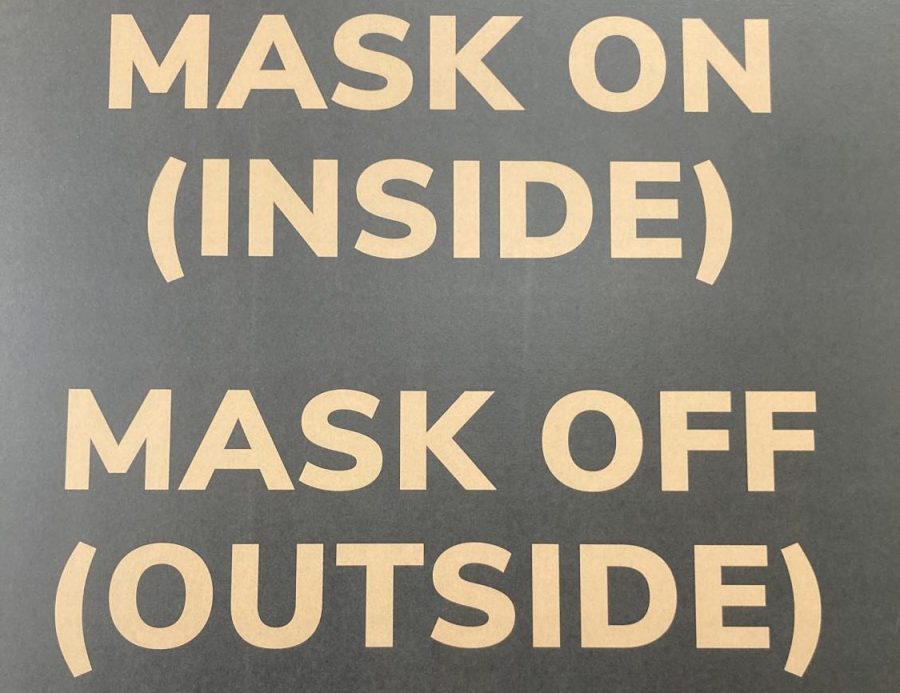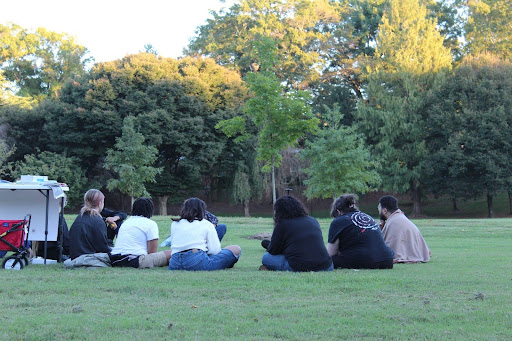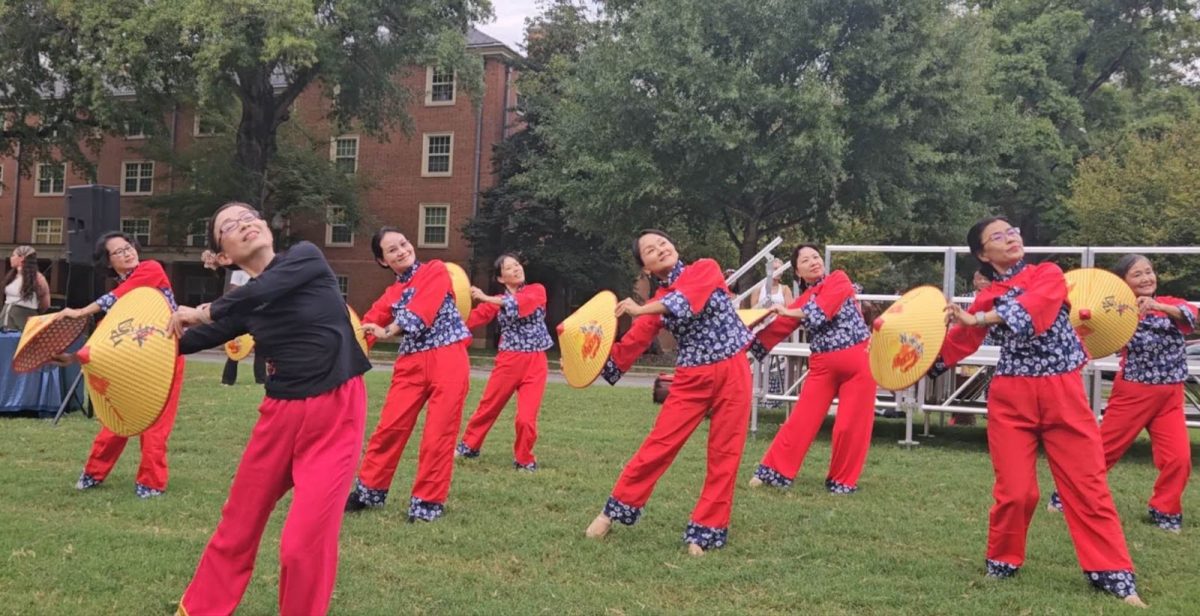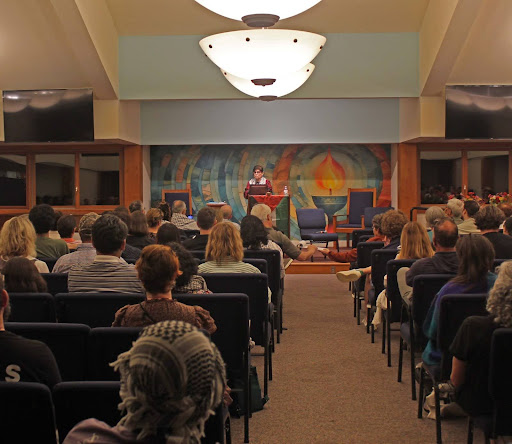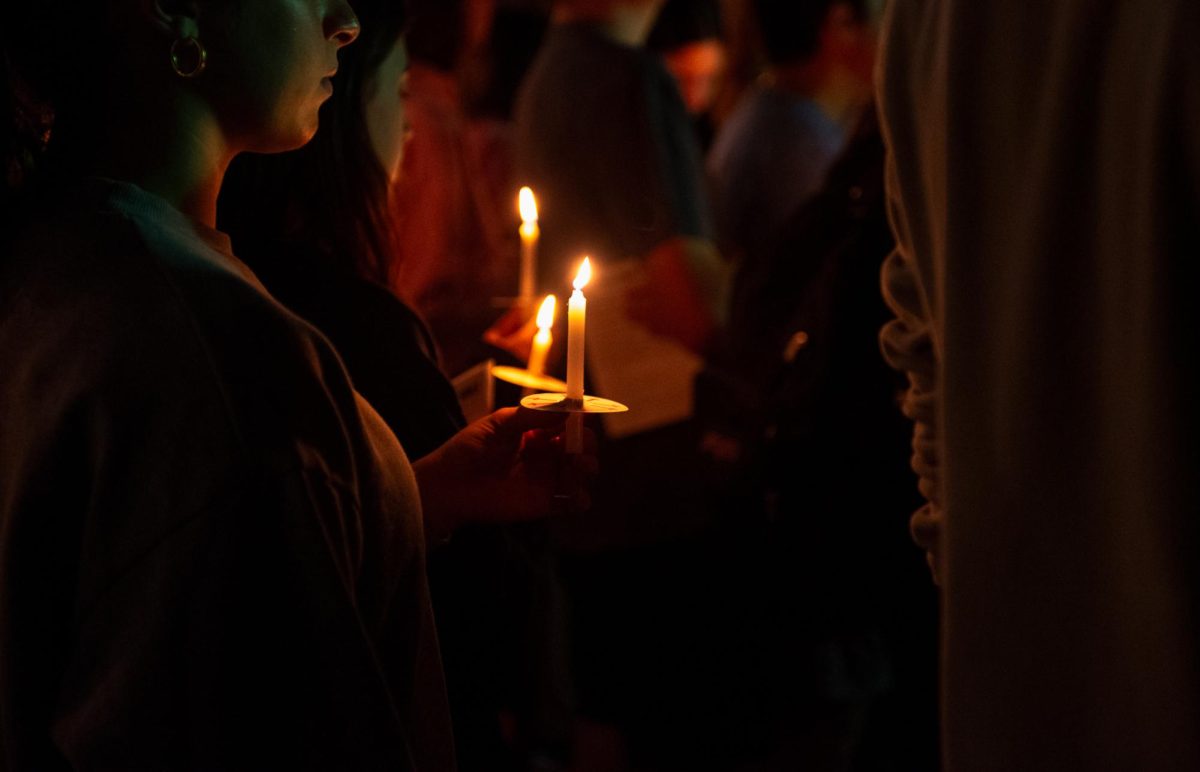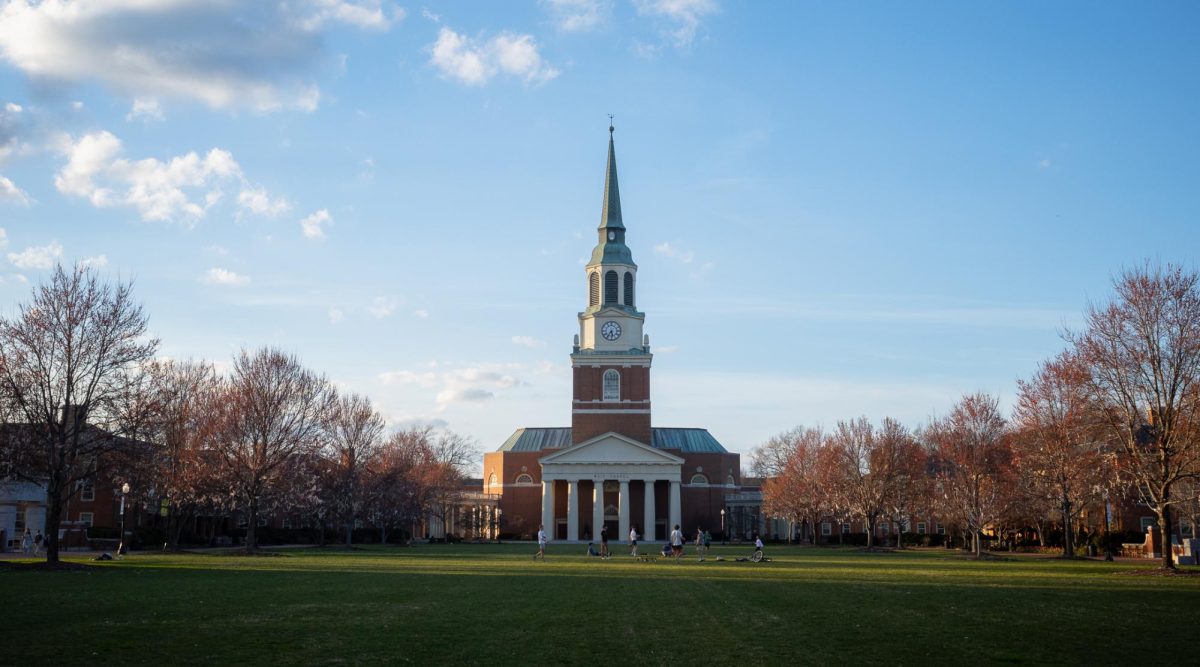For the past several weeks, students and professors have been forced into a position they did not sign up for — remote learning.
Lectures have become Zoom calls, discussions are waged in online forums and the university — recognizing that these classes are neither the classes that professors had planned to teach nor the classes that students had anticipated — has allowed a pass/fail option for most courses.
For professors and students alike, the past few weeks have been a crash course in online learning. While some have found interesting ways to navigate this sudden shift, others are still struggling to make the best use of this new platform.
Since remote classrooms will likely continue to be a part of both the immediate future as summer classes begin, and as the long-term arch of education slowly embraces them, the sudden dive into online learning may provide important lessons for moving forward.
Place Matters
In their current state, there seems to be a general consensus from students that they are not getting as much out of their classes now as they were before.
“You cannot replicate what happens in a classroom within the bedroom or living room,” said sophomore Mark Sucoloski.
This is, of course, for many reasons. Some students are now completing college courses from households with limited access to internet and technology or where other dynamics might prevent them from prioritizing classes. Even those students who have returned home to reliable WiFi and a comfortable living situation are finding it difficult to give the same attention to their schoolwork that they did on campus.
Most commonly, students report feeling tired, stressed and lacking motivation. Sucoloski described feeling “a state of constant distraction” while he tries to complete assignments.
Stay-at-home orders have caused some to feel trapped and, combined with a constant barrage of news updates on deaths and an economic downturn caused by the COVID-19 pandemic, students are finding it difficult to concentrate on their schoolwork.
An even more direct explanation for the communal lack of motivation might also be explained simply by our changes in surroundings.
“Everything matters in terms of the learning space,” said Ali Sakkal, an associate teaching professor in the Department of Education.
Sakkal teaches a course on the cognitive science of learning and he also works with students studying abroad to help them think about how their location can improve their learning. On the cognitive side, he explained that, while we take our classrooms for granted, our educational environments have a massive impact on our ability to learn.
These spaces were designed explicitly with education in mind — your bedroom was not.
“Normally, educators complain about teaching in old, traditional style classrooms instead of more modern designs,” Sakkal said. “Even traditional designs are miles ahead of a home for facilitating education.”
To help assuage the “place problem,” Sakkal said that a lot can be adopted from the work-from-home literature.
As much as students are able, he advises them to create a space that is dedicated to work and not leisure. He said that he has a room dedicated to work where his phone is not allowed to enter.
Rather than a whole room, students might just make a single portion of their home a dedicated workspace and do their best to keep potential distractions from entering this space. “Whatever you can do, these small decisions continue to add up,” said Sakkal.
As much as students can experiment with their own space and with scheduling their work, ultimately, they are at the whim of however their professors choose to deliver class and collect work.
Sucoloski said “[his] professors are certainly extending a lot of grace to [their students],” but he was also blunt with the fact that his newly online classes were not providing him with the same level of education as he experienced on campus.
For students who have never learned online before, this current experience should not be confused with all online classes.
The courses students are taking right now are not online courses – they are in-person curriculums taught online. The pedagogical differences between the two are enormous and professors are trying their best to reckon with them.
Rethinking more than just the syllabus
The shift online has also hit hard for the other side of the classroom, especially for the many professors who have been forced to rapidly adjust their curriculums and teach online for the first time.
Professors learned of the university’s decision to move online along with students when it was officially announced over spring break in March. With just the remainder of the break plus the one extra week of canceled classes, professors had little over a week to make their shift online.
In those first days, multiple professors have described the atmosphere among educators and the Office of Online Education as a “triage mentality.”
“We were all just trying to make sure we had something to deliver,” said Cagney Gentry, a professor of film in the Department of Communication. “It was a rushed and crowded transition. It was never going to be perfect, but we needed to have something in place and then we could adapt from there.”
Dr. Bernadine Barnes of the Art Department had previous experience with online learning so the transition was less daunting for her, but she said that, for many of her colleagues, the leap was “like diving into the deep end of the pool before you really know how to swim.”
“It begins with the simple stuff,” said Steve Folmar, a professor in the Department of Anthropology. “What phrases mean what, which buttons to press when. I had to learn how to deliver via Zoom in a couple of days.”
After learning the basics of delivery, professors then had to reckon with their academic goals and how to achieve them through this new medium.
“You quickly start thinking through all number of things,” Folmar said. “How does the lost class time change your content? How do you balance synchronous and asynchronous class time? How does your personal teaching style translate to an online format?”
“I knew some details would have to be altered, but I didn’t really grasp how much the class would need to change,” Folmar said.
Amid the stress of redesigning classes, one influential blog post titled “Please do a bad job of putting your courses online” has made waves in some academic circles.
As the somewhat-clickbaity title suggests, author Rebecca Barrett-Fox, a professor in the Department of Sociology at Arkansas State University, argues that “your class is not the highest priority of their or your life right now,” and thus professors should not design their new online curriculums with the expectation of full buy-in from all students.
The blog post offers several pieces of pedagogical advice for professors such as focusing on asynchronous delivery so that students can access materials as they are able and making all assignments due at the same time each week to allow students some freedom while also maintaining consistency and preventing work from piling up.
Perhaps most controversially, the blog post seems to discourage professors from diving too deeply into learning new online learning techniques, saying “Ask Yourself: Do I really care about this? (Probably not, or else you would have explored it earlier.)”
Gentry agreed with some aspects of the post, saying “it is a disservice to online education to think what we can create in a week is up to the best standards,” but he also made clear that he and all other professors were treating these circumstances as a learning opportunity for themselves.
“This has given me the chance to see what works and what doesn’t work for online learning in a real way, not just conceptually,” Gentry said. “I’m trying to be transparent with my students about this. They recognize it’s a process and I want to include them and get feedback from them as much as possible.”
For example, Gentry says that he has been experimenting with different ways of delivering his lectures. He began with simple recordings of himself as he lectured using PowerPoint, but this method meant he could not take questions and engage in discussions with his students, his favorite parts of the classroom experience.
Since then, he has shifted to writing down his lectures and refining them into scripts. Then, he pulls clips from his favorite films to showcase the ideas he is teaching for that class and he turns them into shorter, 20-minute video essays.
“I am a film professor after all,” Gentry said. “So how can I use film itself to demonstrate film principles while I tell the story of whichever facet of media I’m covering that day?”
Gentry said the chance to experiment with this new method of lecture delivery is not only changing his perspective of online learning, it is causing him to re-think his whole approach to his curriculum.
“It’s definitely having an influence on my thinking,” Gentry said. “There are certain things about teaching in this new format that I will bring back to inform my face-to-face curriculum.”
Other professors all echoed the same message — they recognize that this is not a situation anyone wanted, but they are all trying to use this moment to improve for the future.
“Faculty are putting in a lot of work and doing a lot of experimenting,” Barnes said. “We don’t all know what is going to work best in each situation, but we’re figuring things out as we go.”
Finding Community Online
While professors are finding opportunity in this time to develop their curriculums, many are finding it more difficult to figure out how to bring the community aspect of campus into their online classrooms.
Though synchronous Zoom classrooms seem like the obvious answer, most of us have had enough experience in the past weeks to recognize that online video chats are by no means a full substitute for a classroom experience.
“These interactions on Zoom, they have all the trappings of a classroom interaction,” Gentry said. “But the information is constrained. You end up missing out on all the little details that make conversations feel full.”
“Zoom fatigue” has quickly set in throughout the world. Synchronous conversation is essential for allowing questions and efficient classroom dialog, but as Gentry puts it, “in Zoom form, the best part of the classroom can be made into chaos.”
Most professors with experience teaching online agree that asynchronous material is the best method for educational delivery, but a class experienced only through text discussions and pre-recorded videos is a class missing the vitality of direct student-teacher interactions.
“My being a real person, a person present with them, really matters. Especially in our current situation,” Barnes said.
Both Gentry and Barnes have sought to expand beyond the traditional emotional connection we find in the classroom by incorporating their respective fields.
Gentry, who teaches courses on film and screenwriting, has shifted his curriculum to encourage students to use their art to express their emotions, just as he is trying to bring emotion into the short essays he is creating as class materials.
Barnes, on the other hand, happens to be teaching an art history course this semester which already planned on exploring how Italian art and architecture were affected by the plague of 1348. She has found primary literature from Italians at the time to be useful for students today.
There are many obvious differences between the plague of 1384 and the pandemic today, but Barnes explained that reading how people hundreds of years ago dealt with an invisible killer offers us a chance to connect even more directly with history than before.
“It gives us this immediate sense that they were like us, but we also see how they were different than we are today,” Barnes said.
In a strange way, we are able to connect with 14th century Italians via the same mechanisms that connect us with other students on campus – because they experienced something similar to us.
“Relationships are best forged through shared experiences,” Sakkal said. Normally, he studies how classroom environments or shared endeavors such as studying abroad with a small group help to facilitate bonding and relationship formation.
“Surviving through adversity has a strong ability to unify us,” Sakkal said. “Now, suddenly, we are all suffering, but we are in different places.”
This poses an interesting dilemma for our emotional relationships — many of us are experiencing very similar situations in similar surroundings, but we are all separated, both physically and by the slight differences in our home lives. We share rhyming realities at home, united by a communal homesickness for our campus, for our classrooms and for normalcy.
If there is an opportunity here for community, it might be in these shared experiences. That is how at least one professor has found success in the social realm of Zoom.
Katherine Moore, a postdoctoral fellow and professor in the math department, says that she was inspired by the math department’s “afternoon tea” sessions, where professors and lab members from around the department come together to talk about all things not math (and, let’s be honest, probably some math). After campus closed, those department meetings have since gone online.
“Now, I have seen professors showing off their yoga abilities and introducing the department to each of their cats,” Moore said. Somewhere in the middle of one of these sessions, she reasoned “Hey, my students might enjoy something like this too.”
Moore says her office hours were already often like parties — she enjoys the idea of a positive atmosphere bringing people together to do math — so when she told her class that she would host an online tea session that didn’t require any math, many of her students were happy to join in.
So far, Moore has hosted two Zoom sessions. She said that the goal is just to provide a relaxed atmosphere for students to talk through their situations and their anxieties.
“I worry about people,” Moore said. “I think about my students a lot and I like to know how they are feeling.”
Even though the semester will soon come to a close, Moore doesn’t necessarily plan on ending the meetings.
“If we’re still social distancing into the summer and I and these students are still feeling isolated at home, then I’ll keep hosting them and students will be free to invite whoever else might want or need that sort of connection,” she said.
Summer Plans
While Moore may still be offering an online community into the summer, Wake Forest has already made the decision to move all Summer Session I courses online. The University is still waiting to make a decision for Summer Session II, though some professors are already planning to deliver those classes online as well.
In addition to for-credit summer courses, the university has also shifted its high school and middle school programs such as the Summer Immersion Program and Summer Exploration Program online as well.
This presents the first opportunity for many members of the Wake Forest faculty to actually prepare for an online program and potentially put to use any lessons they have learned in the second half of this semester.
In all cases, Wake Forest has prepared training modules for professors and summer program academic leaders which they are required to complete before teaching online courses (though professors who have taught summer courses online previously are exempt from this training).
In an email, Kyla Hollingsworth, Executive Director of Wake Forest’s pre-college programs, said that Academic Leaders and Academic Partners would participate in “a 3-tiered training [program] to ensure that they are ready for live, synchronous instruction.”
These pre-college summer programs are all four days long and are meant to give students a glimpse into different fields via demonstrations and discussions. They are planned to be delivered synchronously through Zoom to encourage students to participate actively with leaders and other students, just as they would at an in-person summer experience.
Hollingsworth also stated that, as the programs have shifted online, the university hopes that it will allow students who may have previously been hindered by travel restrictions or who had been waitlisted to now participate.
For professors who are preparing to teach for-credit courses over the summer, many said that they are planning to incorporate a wide variety of synchronous and asynchronous strategies so that they can deliver the academic portion efficiently while still bringing students together to share their experiences.
Folmar of the Anthropology Department has a particularly interesting upcoming summer — not only will he be teaching his first fully online course, but the course, titled “Contemporary Natural and Social Disasters: Anthropological Perspectives” will use the ongoing COVID-19 pandemic as a lens for thinking about natural and social disasters around the world.
When asked how he developed a course revolving around the pandemic so quickly, Folmar said “as an anthropologist, it’s built into me to be observing these cultural shifts.”
Before lectures, he said that, instead of refreshing on course material or rereading his textbooks, he always looks to current headlines to see how he can relate contemporary issues to his course. So it only felt natural to him that the current social landscape created by the pandemic could be incorporated into a class.
“I certainly hate to think of COVID-19 as an opportunity of any sort,” Folmar said. “But, if anything, I hope this course will give students an outlet to address changes they see in their own lives while they learn to incorporate anthropology into their daily lives.”
Of course, teaching on an ongoing pandemic presents its own unique difficulties. For example, the syllabus for the course is developed, but not necessarily set in stone. Part of that is naturally because this disease’s trajectory is not set in stone either, but Folmar also has a pedagogical motivation behind this approach.
“One of the ways we don’t foster learning is by excluding students from thinking about and developing the course itself,” Folmar said. “I want students to look out at the world and think ‘how could I better understand this?’ And then we can build up our own syllabus around those questions.”
Teaching this course online also means that students will be reporting on their own communities across the country and the world instead of concentrating on the immediate surroundings of Winston-Salem — an example of an advantage that only remote learning could bring to a course.
Barnes of the art department plans to incorporate this exact same advantage in her summer online course “History of Western Art.”
In this course, she uploads asynchronous lectures on topics regarding art and architecture and then she challenges her students to go out into their own communities and museums to find examples of ideas covered in the lecture.
“Having students all over the world, that’s the best part of teaching this course during the summer,” Barnes said.
Professor Justin Green, who teaches in the Department of Communications and also coaches the Debate team, will be both teaching Public Speaking over the summer and also leading one of the pre-college programs online.
Green has over eight semesters of online teaching under his belt, so he said that this transition has not been as stressful for him as it may have been for other faculty members. For him, the biggest shift is a conceptual one — what exactly is “public speaking” in an online sense versus an in-person paradigm?
“Traditionally, the ‘public’ you were speaking to was everyone present in the same room as you,” Green said. “But now, so much discussion occurs over the internet, the ‘public’ today is whoever is on the other side of the screen. That’s what this course prepares you for.”
Of the professors who are teaching a summer course online this semester, almost all said that their classes had already been filled (Folmar said that his course still had some room left at the time of publication, for anyone interested).
“I had record enrollment on the first day,” Green said. “The demand is definitely there for online courses.”
Most professors agreed that the draw could likely be attributed to the flexibility offered by online courses as well as the fact that students pay only for tuition, therefore saving on room and board.
To move forward, we must also look backwards
Remote learning at institutions of higher education has existed much longer than you might imagine. Over 100 years ago, universities were offering ‘correspondence programs’ via packages through the mail.
For the most part, this was considered only a marginal aspect of higher education, even as communication technologies advanced with the radio and television throughout the 20th century.
Then, as with all things, the internet came and everything changed.
Today, a quick scroll through twitter practically guarantees a run-in with a “Zoom University” joke of some sort. This is partially driven by the strange and sudden worldwide solidarity we are all experiencing, but within this joke, there is also the underlying notion that an online education is lesser than one in-person.
“There is certainly a narrative of online education as a money grab,” Sakkal said. “Part of why it has been looked at negatively is because those who immediately jumped to capitalize on the trend in the 90’s were for-profit institutions who focused on enrollment and not always on the education quality.”
Partially because of this association, some universities have been hesitant to embrace online learning. Sakkal said that some of that trepidation comes from a desire to protect the “prestige brand” of the university, but the slow adoption also comes from a desire to provide an online education with the same standards as traditional in-person classes.
Wake Forest began to offer its very first fully online summer courses during the summer of 2015. Barnes and her “History of Western Art” course were among that inaugural rollout.
“There are definitely advantages to these classes that you could not gain in-person,” Barnes said. “Online does not mean slacking. My course requires self-discipline and contains more writing than I would assign during a semester.”
Each year since 2015, more online curriculums have been developed so that the university now sports a moderately long list of online courses.
Perhaps most notably, the university has shown a preference for graduate-level online programs.
Wake Forest currently offers entire online curriculums including a Master of Science in Business Analytics, Master of Arts in Counseling, Master of Studies in Law, Doctor of Nursing Practice and Master of Science in Clinical Research Management. All of these programs tend to market themselves towards active professionals as a flexible way to advance specific skill sets.
And now, as of just this Spring, Wake Forest offers two MasterClass-esque online pre-college programs under the label of the Online Immersion Program. These classes are completely asynchronous and feature faculty members delivering lectures in the style of a professionally produced documentary.
The programs, which are available year round and currently include Business and Medicine, offer 30 hours of course material. While the filmed faculty members do not interact directly with students outside of the summer programs, undergraduate students will be hired as program mentors who will hold office hours and engage directly with students to support them.
The stated goal of the programs is “to allow high school students to learn more about college-level topics that they are interested in,” and more courses in different disciplines are currently under development.
In the same email interview, pre-college program Executive Director Kyla Hollingsworth said that the Online Immersion Program was in no way affected by COVID-19. It has been in development since Fall 2019 and the first cohort of students began the program in February.
Now that the university offers online options for pre-college, undergraduate, and graduate courses, it seems obvious that the University feels comfortable advancing further into the field of online learning.
“We have historically been very resistant to the MOOC [Massive Open Online Course] model and for good reason.” Barnes said. “As we continue to move online, I hope that we are moving to embrace good online learning,”
Folmar, for his part, said that he has traditionally been resistant towards online courses, “but I’ve shifted my opinion of online learning since I’ve been forced to be a part of it this semester,” he said.
Despite his openness, Folmar still believes strongly that “there is a danger to going too online too quickly.”
He says that poorly developed online courses tend to prioritize “dumping content” onto students and forgo the important skill development and critical thinking that comes from a thoughtful pedagogy. As such, he hopes that this sudden COVID-driven surge in online learning does not leave a lasting negative effect on higher education.
Sakkal also pointed out that, though much of the marketing behind online learning has leaned into a narrative of increased accessibility for underserved communities, the data have not shown this to be true. It turns out that similar issues to those which prevent these populations from attending or succeeding at in-person institutions continue to plague them in an online setting.
Considering the unknown future of a return to campus next Fall, Sakkal said that it is worth any professor’s time to consider how they might begin to design an online course.
“Authentic learning comes from undefined goals,” Sakkal said. “We should be developing online courses with the goal of shared experiential learning to bring about that authentic learning.”
Barnes, along with the rest of us, is just looking forward to a return to normalcy.
“As professors, we can’t do the basketball. We can’t do the sitting on the quad. All of these millions of small things that make up a college education, we can’t do online,” she said. “But what we can do is teach and try to provide a community. And, for now, we are trying hard to make the best experiences we can.”


